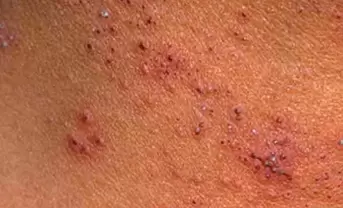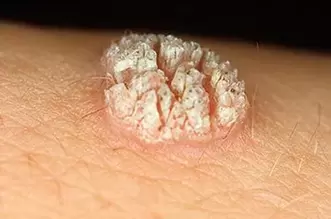To fully answer the question, it is necessary to investigate the nature of the penetration of the infection into the human body. Many experts have worked hard to unravel the whole nature of the origin and development of HPV, which is very popular today. Human papillomavirus has been studied very carefully over the last 30 years. As a result and in the course of research, more than 100 strains related to the nature of the disease were identified. The types of papillomas in the body are not the same type, they are malignant or benign.

HPV is a neoplasm that appears on any part of the skin or on the lining. Unfortunately, some strains later develop into a malignant tumor. You need to know absolutely everything about these types, from "A" to "Z".
Types of skin growth
The appearance of growths on the skin of the body is expressed by a decrease in the immune system. It has a protective function and acts as a kind of barrier. When a type of human papillomavirus enters the body, immunity prevents HPV from taking root. This has been proven by research.
Long-term medical experience has allowed us to divide all skin papillomas into three types:
- Non-oncogenic HPV (such growths will not cause cancer, but will reduce immunity).
- The virus is not a highly oncogenic type (it has a low threshold for pathology).
- Oncogenic risk infection (due to high threshold for oncology).
Although the symptoms of papillomavirus on the skin are no longer severe, they are a cause for concern. Do not leave growth uncontrolled (especially in the genital area). You should contact a dermatologist to fully understand what type of neoplasm is causing it. To begin, the doctor will perform a visual examination and, if necessary, write a direction for additional analysis and research.

If you do not understand what papillomas are, do not start self-medication - it can lead to irreversible consequences.
It is important to consult your doctor to prescribe antiviral therapy. Removal of papillomas without medical treatment cannot guarantee a lasting result, as papillomas are more likely to recur due to viral activity with the next drop in immunity.
The number of existing neoplasms is in the tens. It is important to understand what papillomas are and remember that the entire range of growths presented is divided into five categories. They were divided according to symptoms, color scheme, and oncogenic risk. We will cover each group in more detail later. Thus, the types of papillomas are divided into 5 types.
The first type is simple papillomas
Group I - simple papillomas. Another name is ordinary or vulgar growths. This type of papilloma is widespread. A clear sign of the appearance of a small growth on the skin. During the development of papillomas of any of the known species, it turns into a dark-colored keratinized tubercle. Common warts are localized on the skin, both individually and in all groups. The favorite places for moles are the hands (inside and outside of the hand) and the lower part of the face (mainly the lips and chin).
It should be noted that there are plantar papillomas, which are practically indistinguishable from vulgar growths, only the keratinized outer shell gives its origin. Such warts are a nuisance when walking. It is not easy to get rid of them, but it is quite possible at home.
The second type is true

Group II - squamous papillomas. A characteristic feature of the species is the manifestation of a group of growths. They have practically no bulge and are dark in color.
The growths are rounded, elongated, oval, rising 1-2 millimeters above the level of the skin. Straight papillomas are localized around the mouth, face, and upper half of the body. Occasionally there are papillomas on the neck. Distribution location - upper body. In some cases, it was observed in the genital area. Skin papillomas still belong to this group and appear mainly in adolescence. Warts are localized on the neck, face and hands of young people. The main reason for the appearance is the failure of the immune system.
There are also papillomas on the labia, in the cervix in girls, in the genitals in men, in the rectum, near the anus. These compounds are arranged in groups, connected to each other. Plain flesh-colored papillomas, sometimes slightly darker than the rest of the skin, are formed under the influence of 10, 49, 28 types of papillomavirus.
The third type - pointed
Group III - pointed papillomas on the face and other areas. Another name is wart. The main site of dislocation of neoplasms are mucous membranes. They often affect the genitals and body, spoil their appearance and affect everything inside. These strains are classified as oncogenic risk. It differs in its rapid development from one sample to several in a short time. The method of penetration of genital warts is sexual intercourse. The presence of pointed moles is not desirable for pregnant women, as the baby is likely to be infected. The latter can occur when a newborn baby passes through the birth canal.
The fourth type - filiform papillomas
Group IV - filiform papillomas in the body. In the world of science they are called acrocords. A characteristic feature of neoplasms is the obligatory leg of the mole, which supports itself. The age category is middle-aged people, older women and men. Such growths are most often called old age.
Human papillomavirus has been developing in the body for many years and only manifests itself as a wart after a while. Location of the neoplasm: eyelids, neck, underarms, inguinal area and chest. These growths are traumatic and are often cut as a result of negligence. This is a very dangerous phenomenon, so it is necessary to see a doctor.
The fifth type - interior
Group V - internal moles. This subgroup includes all neoplasms that form in the internal organs of the body. These include warts on the walls of the stomach and rectum. Growths in the mouth and throat, formations in the bladder. The presence of condyloma in this group is not recognized independently, because it requires special diagnosis. However, the presence of growths gives serious symptoms. It is impossible to say how dangerous neoplasms are for the human body. Research is conducted every year and always gives new results.
But one thing is clear, this fact should not be overlooked. For example, an enlargement in the bladder can cause internal bleeding or lead to cancer. Warts in the larynx impair respiratory function and the ability to speak. By the way, the latter can also be localized in a newborn baby - so a pregnant woman should be especially careful.
Causes of papillomas
HPV is an infection that causes any growth after entering the human body. Some strains of neoplasms turn into cancerous tumors. Here are the most common causes of infection:
- constant change of sexual partners;
- bad habits (alcohol, smoking, drug addiction);
- decreased immune defense;
- disruption of physiological processes in the body;
- negligence in personal hygiene (use of other people's personal belongings).
Common symptoms of all types
The most likely manifestation of the presence of HPV in the body in women is the appearance of growths. All the characteristics depend on the location of the neoplasms. Let's take a closer look at the symptoms, depending on the type of papilloma and its types.
- Acute condyloma. Occurs in the mucous membranes of the genitals, larynx, oral cavity, stomach and inner walls of the rectum. Accompanied by a slight itching and unpleasant odor on the genitals. It is undesirable to ignore this type of growth, because oncogenic pathology can lead to catastrophic consequences.
- Intraductal papilloma. Location of the duct in the mammary gland. Characteristic signs of growth: redness around the nipple, slight itching and burning. With a light pressure on the nipple, an icor or a greenish discharge is released. Breast papilloma is not a cancer at first, but in a neglected state it turns into a malignant tumor.
- Plantar warts. Speeches are marked by the presence of corn shape on the heel. Squeezing while walking, pressing, causes discomfort. Painful sensations are manifested by sharp and sharp pain in the area of the neoplasm.
- Papilloma in the throat. The initial stage of growth is not marked by significant symptoms, but the symptoms intensify during development. The voice changes, there is a feeling of coma in the throat, respiratory function is impaired. Has difficulty swallowing saliva and food.
- Straight warts. Occurs in adolescents on the lower part of the face and arms (on the edge of the hand). There are no severe symptoms. Only sometimes there is a slight itching.
Treatment of skin neoplasms
After finding an increase in the body, contact a specialist dermatologist to prescribe the latter treatment. Do not self-medicate, as some strains have a high oncogenic type (this applies to both men and women).
Not all HPVs (human papillomavirus) have external signs in the form of neoplasms. These growths can easily turn into malignant tumors, and this is already dangerous. It should be noted that human papillomavirus remains in the body for life. As a result, it is only possible to reduce activity or, in other words, to put the infection into a "sleep" state. However, laser therapy will help to completely destroy the mole completely painlessly.
Pay attention to external changes in the skin, consult a doctor in a timely manner. Take vitamin complexes and support the immune system. Follow certain rules and your health will be safe. In addition, the types of facial papillomas that are already detected and what photos can be seen on the Internet are different, and you should find out what the tension is before applying for removal. You can find any description on the World Wide Web.























